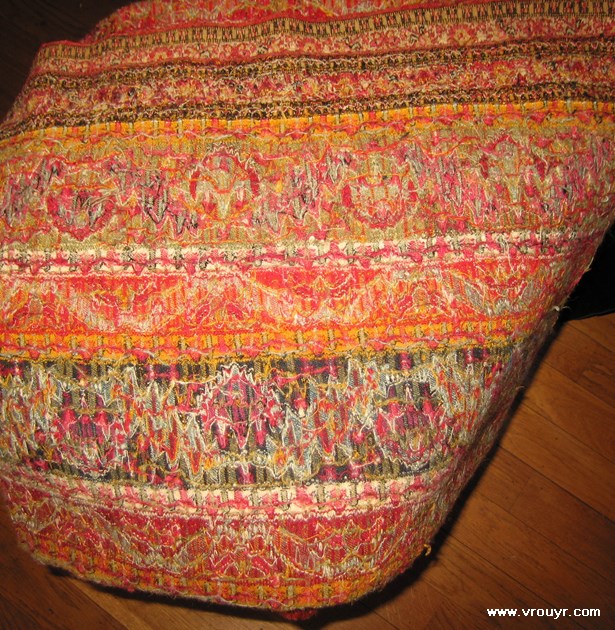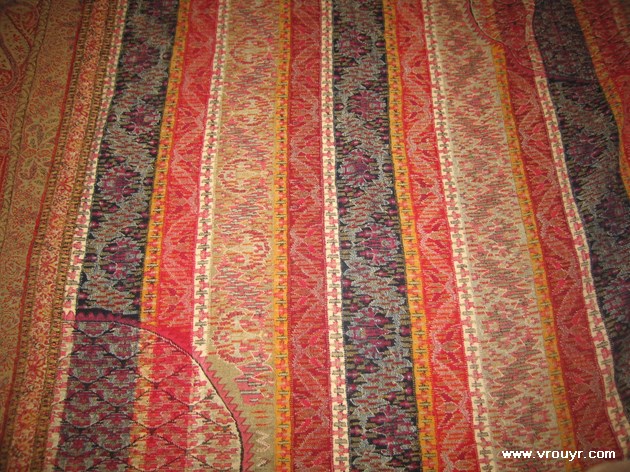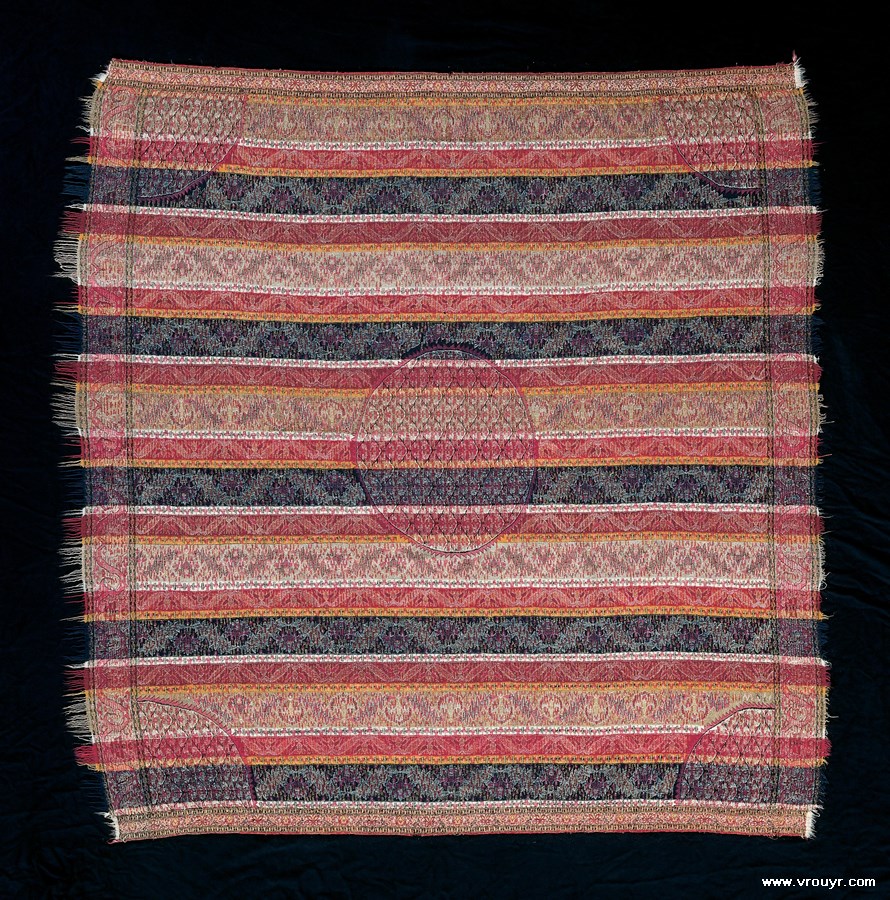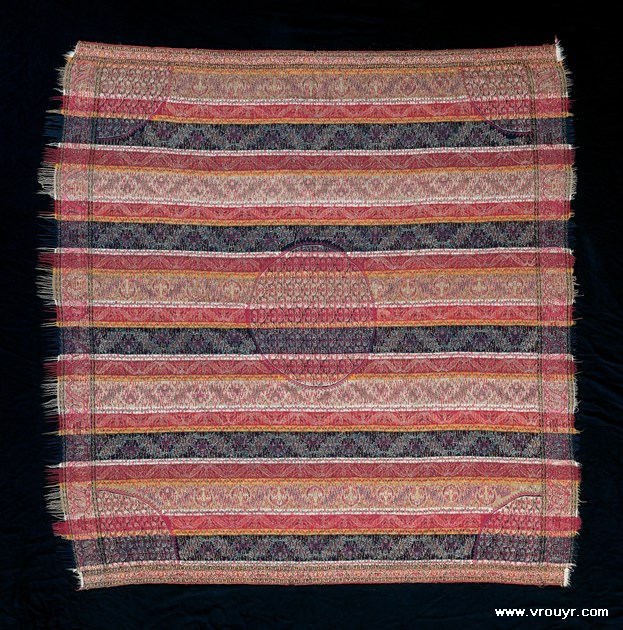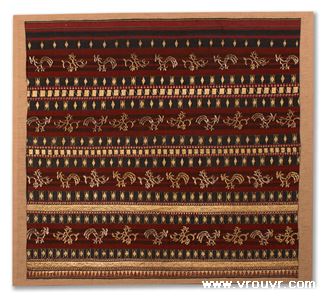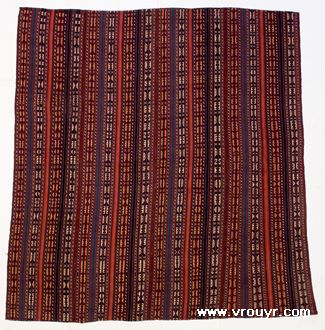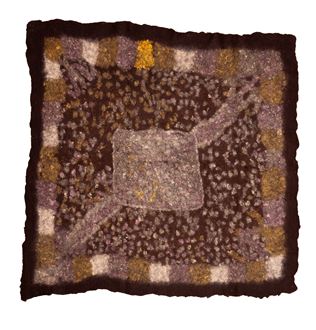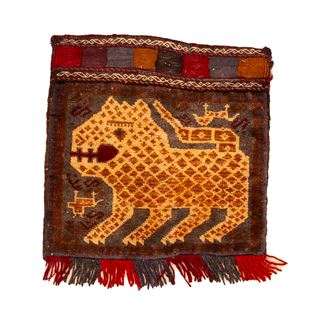Cashmere shawl
ref: 18276
5000 - 10000 EUR
163 x 170 cm
5' 4¹/₅" x 5' 6⁹/₁₀"
warp and weft: wool
India
Coulours may appear different on the website than in reality. All mentioned prices and sizes are indicative and not binding. Possibly some rugs that are still online, are not available anymore in the showroom.
In the 15th century Nadir Begh, a Turcoman weaver came to Cashmere and built the first looms for making fine shawls. Until today the locals respect his memory. More looms, the craftsmanship grew and eventually was considered as a major art.
Basically there are two techniques:
a/ motives are a result of the alternation of warp and weft dyed yarn (kanikar) which takes more time.
b/ a warp and weft fabric on top of which patterns are sewn in fine needlework (amlikar)
At the dawn of the 19th century, Cashmere shawls were hardly affordable for the European middle class and was acquired by a limited and select clientele.
Around 1810 many Cashmere weavers moved to Punjab because of high local taxes. The work was not the same. The wool was coarser and even when the textiles were rinsed, the rivers in Punjab did not seem to have the same composition.
Besides, epidemics and famine decimated the Cashmere population which provoked the decay of the Cashmere shawls.
On the other hand, France (Lyon) and Scotland (Paisley) had new mechanical looms, producing lookalikes that would conquer the European interiors.
YOU MAY ALSO LIKE

 Visit Vrouyr2
Visit Vrouyr2



 favourites
favourites

